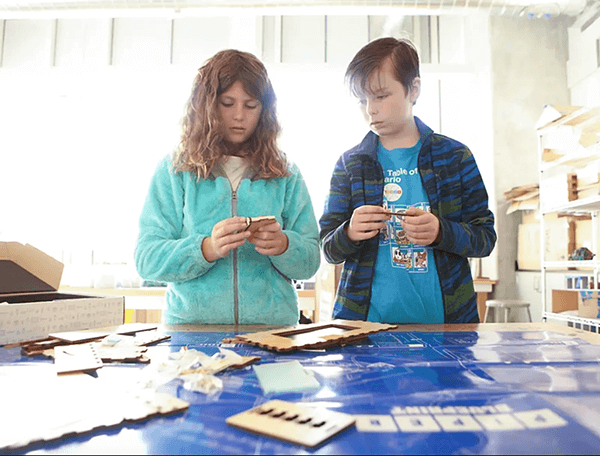
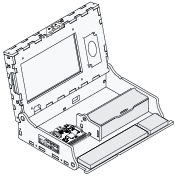 Piper Computer Kit
Piper Computer Kit
The continued build steps will help if the learning is led by the learners themselves but educators should help reinforce the computer science learning around teamwork and problem solving (Reference CA CS Standards 3-5.CS.3 Determine potential solutions to solve simple hardware and software problems using common troubleshooting strategies; also see 3-5.CS.3 Determine potential solutions to solve simple hardware and software problems using common troubleshooting strategies. - For example, students could prepare for and participate in a collaborative discussion in which they identify and list computing system problems and then describe common successful fixes. (CA CCSS for ELA/Literacy SL.3.1, SL.4.1, SL.5.1)
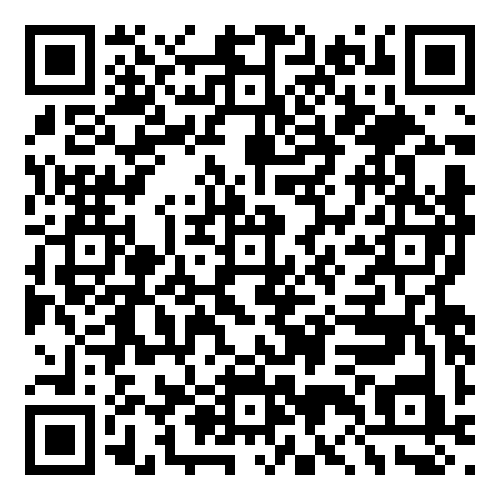 Project Manager: Salary $104,920/yr
Project Manager: Salary $104,920/yr
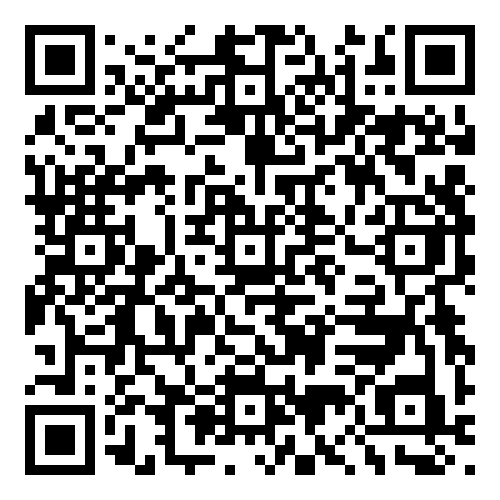 Construction Manager: Salary $101,480/yr
Construction Manager: Salary $101,480/yr
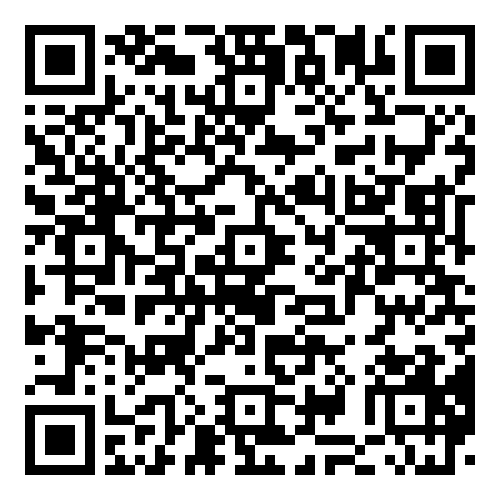 Architect: Salary $93,310/yr
Architect: Salary $93,310/yr
 Computer Hardware Engineer: Salary $132,360/yr
Computer Hardware Engineer: Salary $132,360/yr
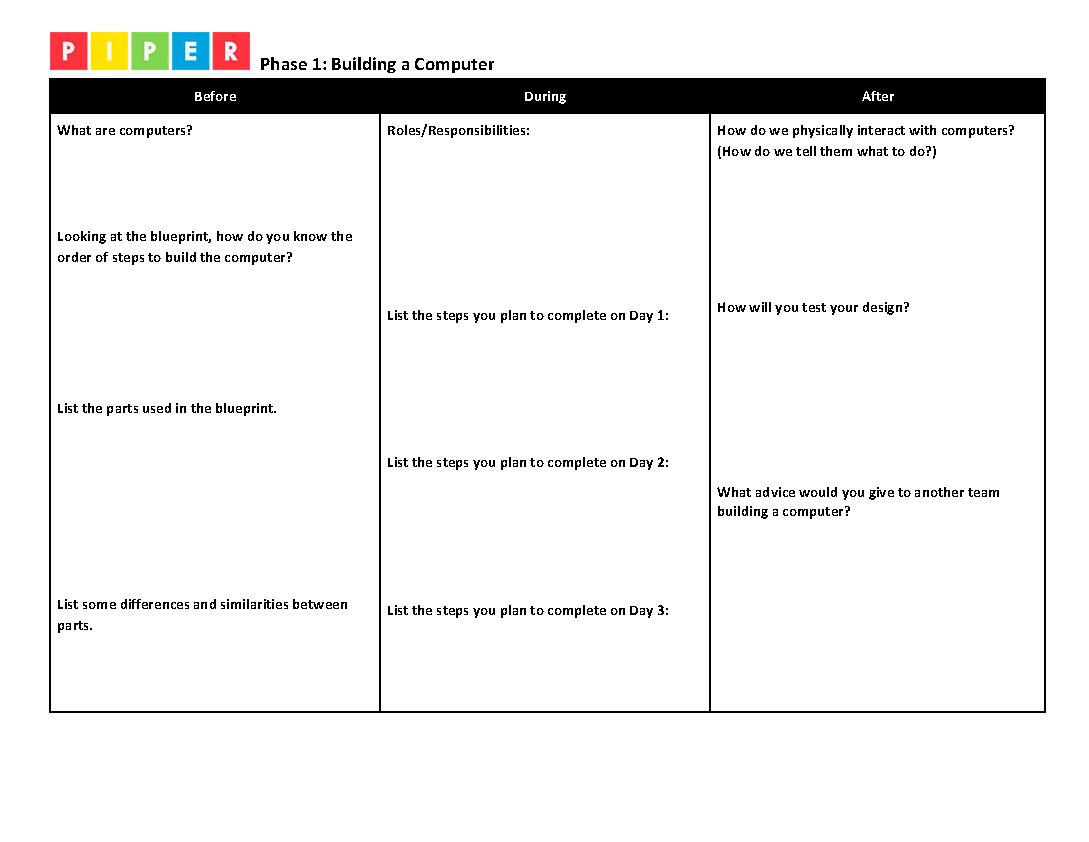 DOWNLOAD
DOWNLOAD
Screwdriver A tool that helps you turn screws, which are small metal pieces that hold things together like when you are building or fixing a toy.
Battery A device that stores chemical energy and converts it into electrical energy to power electronic devices.
Speaker A device that converts electrical signals into sounds, allowing you to hear music, voices, or other audio.
Beginning with phase 1, all phases will align with standards that apply to all the lessons in the phase. For this phase the CA 2019 K-12 Computer Science Content Standards, 2017 Computer Science Teachers Association (CSTA) K-12 Computer Science Standards (csteachers.org/standards) and K–12 Computer Science Framework (k12cs.org) informed the development and alignment of the lessons that follow. Use them with daily or weekly agendas and planning. Phase 1 is where the learners first build a Piper kit.
We are excited to be aligned with the following standards.

| Concepts | Standards |
|
Computing Systems: Devices, Troubleshooting |
3-5.CS.1 Describe how computing devices connect to other components to form a system. (P7.2) 3-5.CS.3 Determine potential solutions to solve simple hardware and software problems using common troubleshooting strategies. (P6.2) 6-8.CS.2 Design a project that combines hardware and software components to collect and exchange data. (P5.1)
6-8.CS.3 Systematically apply troubleshooting strategies to identify and resolve hardware and software problems in computing systems. (P6.2) |
|
Algorithms & Programming |
3-5.AP.13 Decompose problems into smaller, manageable tasks which may themselves be decomposed. (P3.2) 3-5.AP.18 Perform different roles when collaborating with peers during the design, implementation, and review stages of program development (ie. following the Piper Blueprint) 6-8.AP.13 Decompose problems and subproblems into parts to facilitate the design, implementation, and review of programs. (P3.2) 6-8.AP.18 Distribute tasks and maintain a project timeline when collaboratively developing computational artifacts. (P2.2, P5.1) |
|
Impacts of Computing |
CA CS 3-5.IC.20 Discuss computing technologies that have changed the world, and express how those technologies influence, and are influenced by, cultural practices. 6-8.IC.21 Discuss issues of bias and accessibility in the design of existing technologies. (P1.2) |
|
Practices |
P1. Fostering an Inclusive Computing Culture P2. Collaborating Around Computing P4. Developing and Using Abstractions P5. Creating Computational Artifacts P6. Testing and Refining Computational Artifacts |

| Concept | Standard |
|
Generate and compare multiple solutions that use patterns to transfer information. |
|
|
Generate and compare multiple possible solutions to a problem based on how well each is likely to meet the criteria and constraints of the problem (Performance Expectation). |
|
|
Plan and carry out fair tests in which variables are controlled and failure points are considered to identify aspects of a model or prototype that can be improved. (P.E.3.4.7) |
3–5-ETS1-3 |
|
Evaluate competing design solutions using a systematic process to determine how well they meet the criteria and constraints of the problem. |
MS-ETS1-2 |